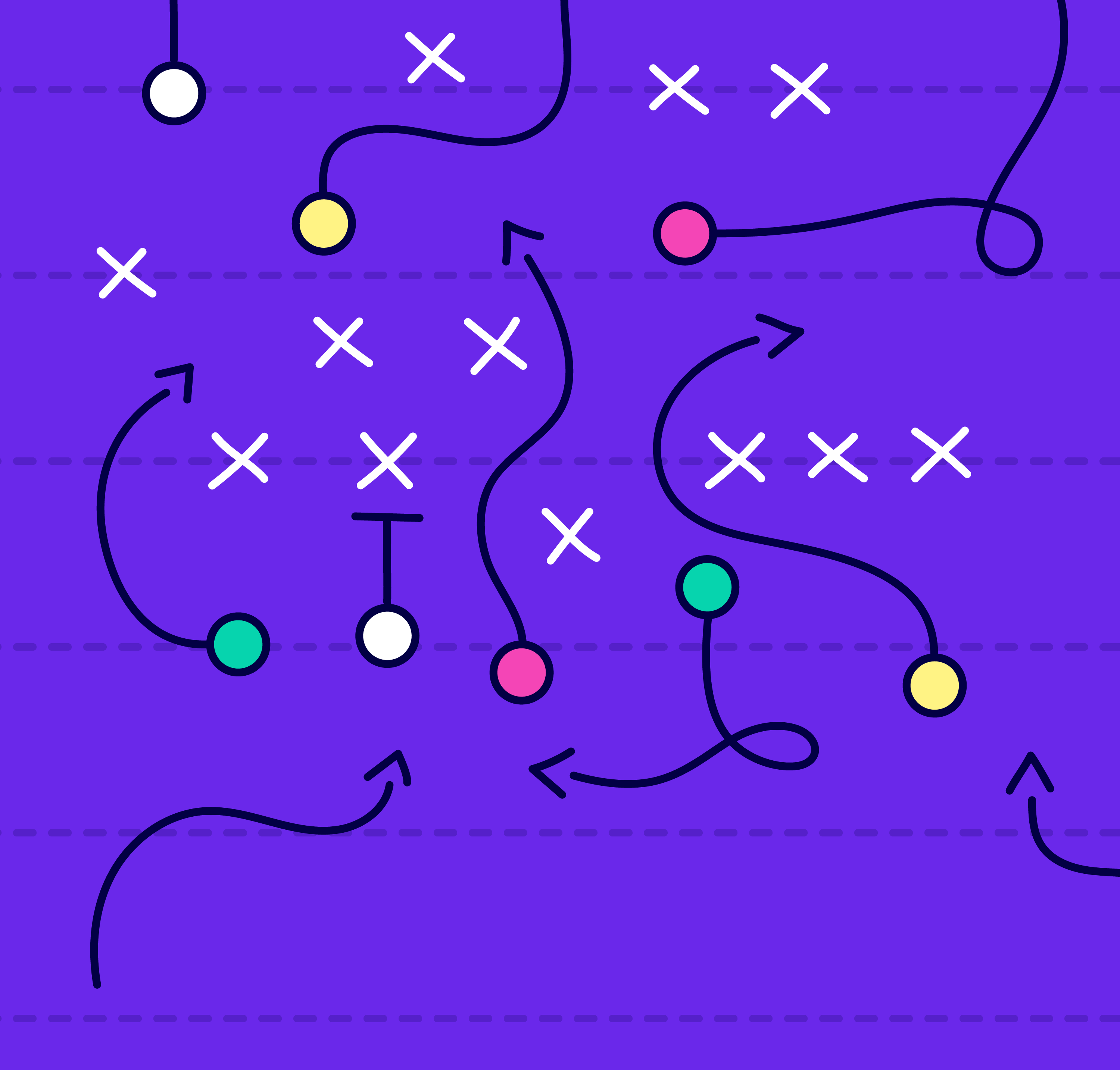
Articles
The Benefits of Implementing a Performance Management System

As businesses strive to remain competitive in today's ever-evolving environment, one key factor that they must focus on is their employees' performance. Poor employee performance can weigh down an organization, stifle productivity, and hurt its bottom line. This is where a performance management system (PMS) comes in — it is an essential tool for driving employee engagement, enhancing productivity, and improving communication and collaboration within an organization. In this article, we'll explore the benefits of implementing a PMS in your organization and how it can help you achieve your business objectives.
Understanding Performance Management Systems
Performance management systems can vary in complexity and design. At their core, however, they are designed to help managers monitor, measure and develop employees' performance. There are several key components to an effective PMS, including:
What is a Performance Management System?
A performance management system is a process of setting objectives, measuring progress, identifying areas for improvement and rewarding high performers. It's a method for evaluating employee performance and providing feedback to help employees develop their skills and grow professionally.
Key Components of an Effective Performance Management System
A PMS should provide managers with a framework for connecting individual employee goals to wider organizational objectives. This alignment helps ensure that employees are working towards shared goals that reflect the overall mission and vision of the organization. Additional critical components of an effective PMS include:
- Setting clear expectations and objectives.
- Encouraging employee ownership of goals.
- Monitoring progress and providing regular feedback.
However, an effective performance management system is not just about setting goals and monitoring progress. It should also be a tool for employee development. Managers should work with employees to identify areas for improvement and provide resources and support to help them develop their skills. This could include training, mentoring or coaching.
Another important component of a PMS is recognition and reward. High-performing employees should be recognized and rewarded for their achievements. This could be in the form of bonuses, promotions or other incentives. Recognizing and rewarding high performers helps to motivate employees and encourages them to continue to strive for excellence.
Finally, an effective PMS should be an ongoing process. It's not something that should be done once a year during an annual performance review. Instead, managers should provide regular feedback and check-ins with employees throughout the year. This helps to keep employees engaged and motivated and ensures that any issues or concerns are addressed in a timely manner.
Overall, an effective performance management system is essential for any organization that wants to develop and retain top talent. By setting clear expectations, providing regular feedback, offering development opportunities and recognizing high performers, managers can create a culture of excellence that benefits both employees and the organization as a whole.
Aligning Employee Goals with Organizational Objectives
One of the most critical elements of a PMS is ensuring that employee goals align with organizational objectives. When employees feel like they are making a meaningful contribution towards the company's goals, they are more likely to be engaged, committed, and motivated.
Aligning employee goals with organizational objectives is crucial to the success of any organization. When employees understand how their work contributes to the overall success of the company, they are more likely to be invested in their work and committed to achieving their goals.
Setting Clear Expectations and Objectives
Managers need to work closely with employees to set clear goals and expectations that align with their job responsibilities and organizational objectives. These goals should be SMART (specific, measurable, attainable, relevant and time-bound) and mutually agreed upon by both the employee and manager.
Setting clear expectations and objectives is essential for employees to understand what is expected of them. When employees have a clear understanding of their goals and objectives, they are more likely to be motivated and engaged in their work.
Encouraging Employee Ownership of Goals
Motivated employees take initiative and ownership of their work. They want to make a difference, achieve goals and grow professionally. To encourage employee ownership of goals, managers must empower them by giving them the tools, resources, and autonomy they need to succeed.
Encouraging employee ownership of goals is essential for employees to feel invested in their work. When employees feel like they have ownership of their work, they are more likely to take pride in their work and strive for excellence.
Monitoring Progress and Providing Regular Feedback
An effective PMS includes ongoing monitoring of employee progress and providing regular feedback. Feedback should be constructive, specific and timely. Regular check-ins and performance conversations helps to build trust and foster communication between employees and managers.
Monitoring progress and providing regular feedback is essential for employees to understand how they are performing. When employees receive regular feedback, they are more likely to be motivated to improve their performance and achieve their goals.
In conclusion, aligning employee goals with organizational objectives is crucial to the success of any organization. By setting clear expectations and objectives, encouraging employee ownership of goals, and monitoring progress and providing regular feedback, managers can ensure that their employees are engaged, committed, and motivated to achieve their goals.
Enhancing Employee Engagement and Motivation
Research shows that engaged employees are more productive, committed, and less likely to leave an organization. A Performance Management System (PMS) can help improve employee engagement and motivation in several ways.
Employee engagement is a critical factor in the success of any organization. Engaged employees are passionate about their work, committed to the organization's goals, and willing to go above and beyond to help the organization succeed. In contrast, disengaged employees are less productive, less committed, and more likely to leave the organization.
A Performance Management System (PMS) is a tool that organizations can use to improve employee engagement and motivation. A PMS provides a structured approach to setting goals, providing feedback, and recognizing and rewarding high performance.
Recognizing and Rewarding High Performance
Employees who feel valued and recognized for their contributions are more likely to be motivated and committed. A PMS should include mechanisms for recognizing and rewarding high performers. These rewards don't have to be financial — they can be as simple as public acknowledgment or additional opportunities for growth.
One way to recognize and reward high performance is through a "Employee of the Month" program. This program can recognize employees who have gone above and beyond in their work, providing them with public acknowledgment and additional opportunities for growth and development.
Providing Opportunities for Growth and Development
Employees who see opportunities for growth and development at their organization are more likely to be engaged and committed. This includes providing training, professional development opportunities, and access to mentorship programs and coaching.
A PMS can help facilitate these opportunities by providing employees with regular feedback on their performance and identifying areas where they can improve. This feedback can be used to create individualized development plans that help employees achieve their career goals and improve their performance.
Fostering a Culture of Continuous Improvement
In a fast-paced, ever-changing marketplace, organizations must continually improve and adapt to remain competitive. A PMS can help foster a culture of continuous improvement by encouraging employees to identify areas for improvement, share ideas, and provide feedback. When employees feel like their contributions are valued, they are more likely to be engaged and committed to improving organizational performance.
One way to foster a culture of continuous improvement is through regular "town hall" meetings where employees can share their ideas and feedback with senior leaders. These meetings can be used to identify areas where the organization can improve and to develop action plans to address these issues.
In conclusion, a Performance Management System (PMS) is an essential tool for improving employee engagement and motivation. By recognizing and rewarding high performance, providing opportunities for growth and development, and fostering a culture of continuous improvement, organizations can create a workforce that is passionate, committed, and dedicated to the organization's success.
Improving Communication and Collaboration
Effective communication and collaboration are essential for organizational success. A PMS can help improve communication and collaboration in several ways. In addition to the benefits mentioned above, there are several other ways in which a PMS can help improve communication and collaboration within an organization.
Facilitating Regular Check-ins and Performance Conversations
Regular check-ins and performance conversations between employees and managers help build trust and communication within an organization. These conversations provide an opportunity for feedback, clarification, and recognition of employee contributions. They also provide an opportunity for managers to identify areas where employees may need additional support or training.
Regular check-ins can also help employees feel more comfortable approaching their managers with questions or concerns, which can help prevent small issues from turning into larger problems.
Encouraging Cross-Functional Collaboration
A PMS should encourage cross-functional collaboration, teamwork, and shared goals. This can help build a culture of trust, cooperation, and communication within an organization, improving productivity and performance. Cross-functional collaboration can also help employees develop new skills and gain a better understanding of the organization as a whole.
One way to encourage cross-functional collaboration is to create opportunities for employees from different departments to work together on projects or initiatives. This can help break down silos and encourage employees to share their knowledge and expertise.
Addressing Performance Issues Proactively
A PMS should include mechanisms for addressing performance issues proactively. This includes providing support and resources to help employees improve their performance and addressing issues as soon as they arise. When managers address performance issues quickly, they can help prevent them from escalating and negatively impacting organizational performance.
One way to address performance issues proactively is to provide employees with regular feedback on their performance. This can help employees understand where they stand and what they need to do to improve. It can also help managers identify potential performance issues before they become major problems.
Another way to address performance issues proactively is to provide employees with opportunities for training and development. This can help employees develop new skills and improve their performance, which can benefit both the employee and the organization as a whole.
Effective communication and collaboration are essential for organizational success. A PMS can help improve communication and collaboration by facilitating regular check-ins and performance conversations, encouraging cross-functional collaboration, and addressing performance issues proactively. By implementing a PMS, organizations can create a culture of trust, cooperation, and communication that can lead to improved productivity and performance.
Conclusion
Implementing an effective performance management system is critical for organizational success. By aligning employee goals with organizational objectives, enhancing employee engagement and motivation, and improving communication and collaboration, organizations can drive productivity, performance and achieve their business objectives. By continuously monitoring and adapting performance management systems, organizations can create a culture of continuous improvement and stay ahead of the competition.
Similar Blog Posts










